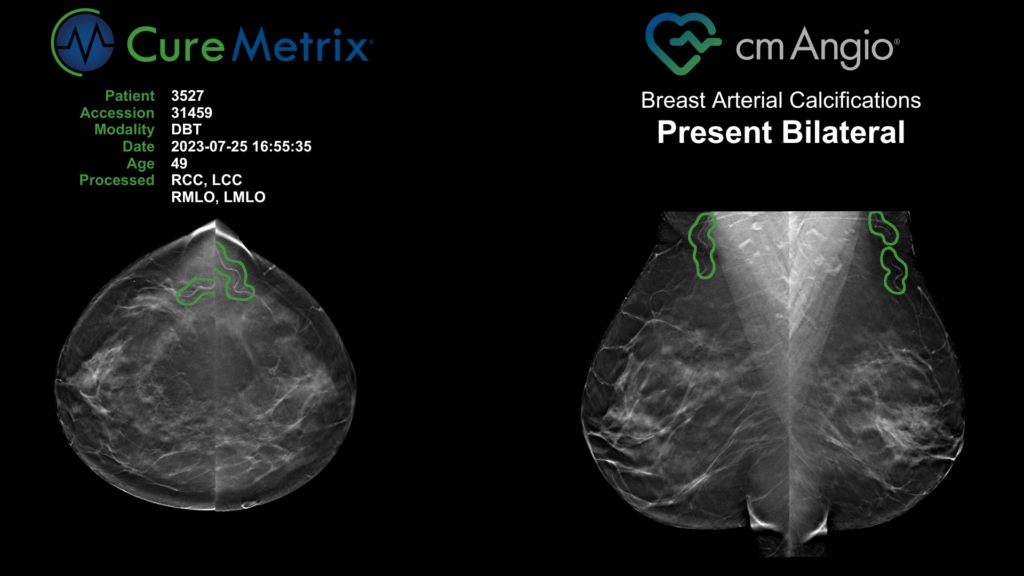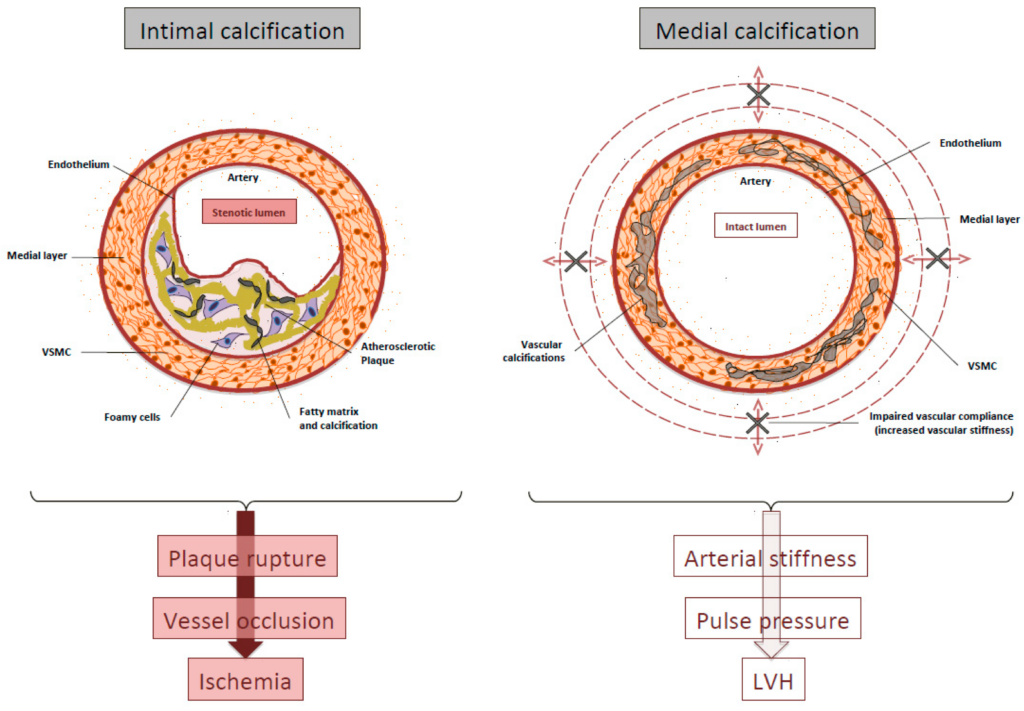Bringing Vascular Health into Focus
One Mammogram at a Time

cmAngio® is an ANVISA registered medical device using Artificial Intelligence (AI) to detect Breast Arterial Calcifications (BAC), an incidental finding in routine screening mammograms, indicative of arteriosclerosis.
BAC are calcifications in the breast arteries that can indicate arteriosclerosis, a type of arterial stiffening that can be attributable to cardio-vascular disease. cmAngio analyzes both full-field digital mammography (FFDM) and digital breast tomosynthesis (DBT) screening mammograms to identify and mark these anomalies, which are currently only identified as incidental findings.
Importantly, cmAngio allows radiologists to use existing screening mammograms to identify women who have BAC and, when appropriate, refer them for further evaluation tied to heart health outcomes without any additional radiation or procedure. It highlights the BAC directly on the image so radiologists can easily review and report.
The call to action is clear: by integrating BAC detection into routine imaging, we can address one of the most pressing, under-recognized risks in women’s health.
Understanding Breast Arterial Calcifications
Breast Arterial Calcifications are medial calcifications of varying attenuation and length along the walls of the arteries and are currently considered a benign incidental finding in screening mammograms. Among women who have had screening mammograms, the prevalence of BAC varies from around 12 to 42.5%1. However, less than 5% of all instances of incidental findings of BAC in mammograms are reported2. There is no established guideline at a state or national level for identifying, evaluating, and reporting BAC, leading to inconsistent practices across different institutions and generally low rates of reporting.

Figure 1: Schematic representation of intimal and medial calcification. LVH: Left ventricular hypertrophy; VSMC: Vascular smooth muscle cells.
Source: Cozzolino M, Ciceri P, Galassi A, Mangano M, Carugo S, Capelli I, Cianciolo G. The Key Role of Phosphate on Vascular Calcification. Toxins. 2019; 11(4):213.
Publications
Community Support
Growing Awareness in Radiology and Cardiology
The Canadian Society of Breast Imaging has issued a position statement advocating for routine BAC reporting on mammography.
Leading cardiologists agree with the clinical relevance of BAC findings. In JACC: Advances, Dr. Lori Daniels and Dr. Dipti Itchhaporia wrote:
“While we work toward developing pathways and comprehensive guidelines for tomorrow, we must start using what we already know about BAC to inform care and reduce risk today… Our patients deserve nothing less than our full commitment to leverage every opportunity to save lives.”
This growing body of support highlights the need to recognize BAC as more than an incidental finding—it’s a potential early marker of vascular health.
Women’s Heart Health by the Numbers
1 in 5
Women die from heart disease²
12 – 42.5%
Of mammograms have Vascular Calcifications present3
< 5%
Actual reporting of findings of Vascular Calcifications1
65%
Of women who die from heart attacks are asymptomatic4
cmAngio Key Benefits
- Provides visualization of BAC location on cmAngio scorecard so radiologists can quickly see what the algorithm has identified.
- Enables BAC identification and reporting without additional radiation for the patient or procedures by the radiologist.
- Allows radiologists to incorporate relevant information into their overall patient assessment and recommendations for follow-up.
- Helps identify women who have BAC and might otherwise have gone undiagnosed until other more serious symptoms became apparent.
cmAngio Key Features
cmAngio® is an ANVISA registered medical device available for commercial use in Brazil. Registration #81464750139.
